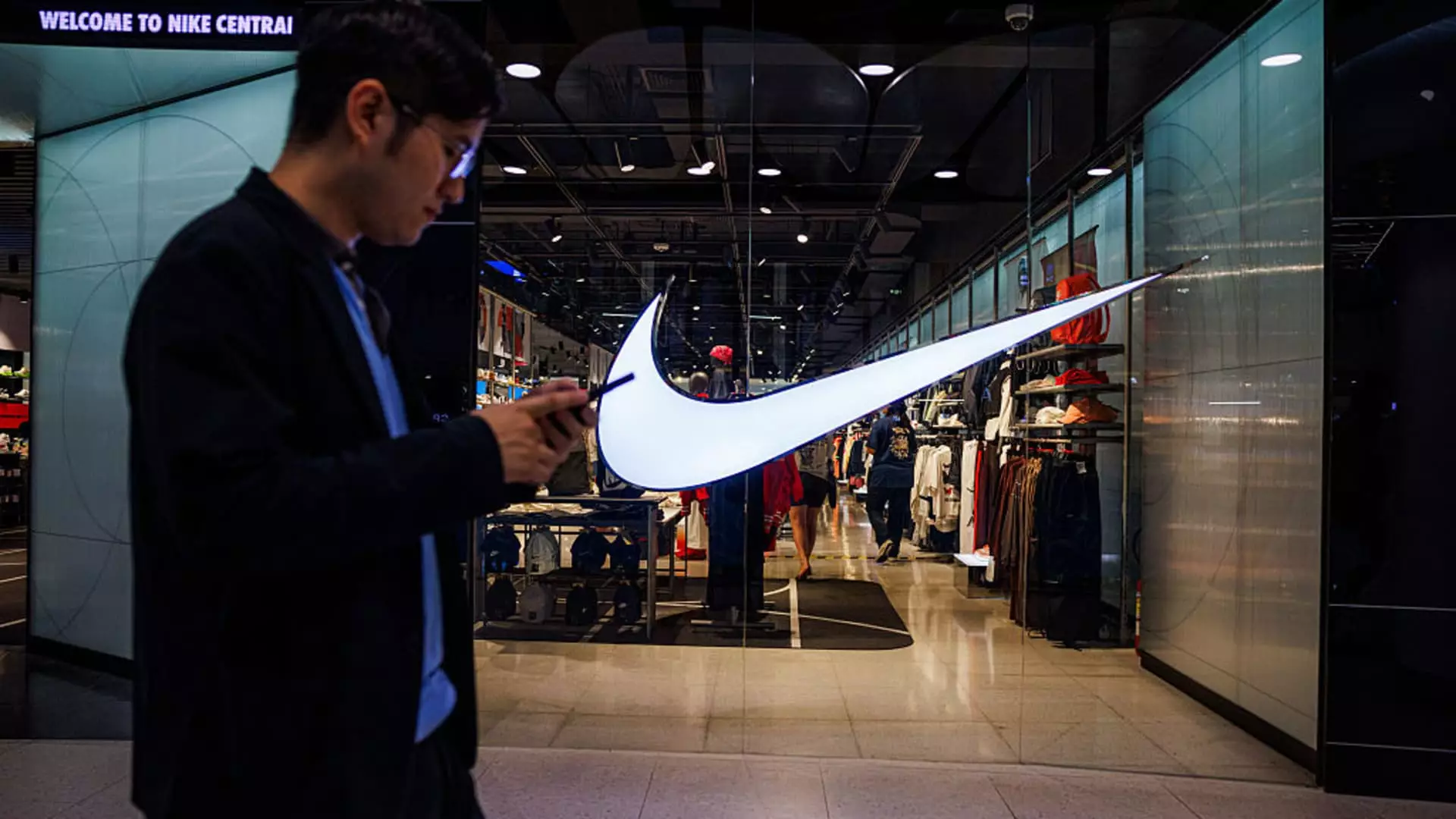Nike’s recent 17% stock jump stunned many investors, but it’s not just a matter of beating quarterly expectations—this rally reveals a company grappling with and adapting to multifaceted challenges. Nike acknowledges that tariffs have cost it roughly $1 billion, yet claims to have already endured the toughest portion of its financial setbacks. This raises a critical point: instead of basking in short-term gains, Nike’s trajectory underscores the reality that global supply chain disruptions and trade friction are long-term challenges companies must strategically navigate. The upgrade from HSBC from hold to buy reflects cautious optimism, grounded less in rosy projections and more in Nike’s ability to endure and recalibrate amid tough terrain.
Sporting Goods Stocks Ride Coattails but Lack Momentum
The positive ripple effect from Nike’s results lifted Dick’s Sporting Goods and On Holding, but the gains are modest—4% and 2% respectively—which signals investor uncertainty beneath the surface. Whereas Nike is a direct manufacturer with control over product and supply chain, retailers like Dick’s are impacted by broader consumer spending trends, many of which remain volatile in the current economic climate. While investors often treat Nike’s strength as a barometer for the entire sector, it’s important not to overstate correlation here. Retailers remain vulnerable to inflationary pressures and changing consumer behavior, meaning these smaller moves may simply reflect temporary relief rather than sustained sector revival.
Gold’s Volatility Reflects Market Unease, Not Comfort
Newmont’s 4% decline amid a dip in gold prices is a salient reminder that the precious metal’s status as a safe haven is far from guaranteed. Although Newmont has surged over 50% year-to-date, this sudden pullback exposes the fickle nature of investor sentiment toward traditional hedges. It raises questions about market complacency and whether investors are prematurely stepping away from gold in hopes of chasing yield elsewhere. As geopolitical and economic risks persist globally, a downshift in gold prices should not breed overconfidence; rather, it cautions that risk remains concentrated and markets fragile.
Estée Lauder’s Comeback Fueled More by Currency Than Core Strength
The 2% leap in Estée Lauder’s shares, following an HSBC upgrade, highlights how external factors like currency fluctuations can overshadow organic business performance. A weaker U.S. dollar undeniably benefits multinational firms in terms of reported revenues and profits. Yet the praise for a restructuring program masking underlying weaknesses risks painting an overly optimistic picture. Investors must scrutinize whether cost cuts and currency tailwinds alone can sustain momentum without substantial innovation or deeper consumer engagement, especially given the intensifying competition in the beauty sector globally.
Crypto Stocks’ Correction Reveals Fragile Foundations
The widespread decline across crypto-related stocks—Coinbase down 5%, Circle plunging 11%, among others—during a winning month signals a sobering truth about the sector’s volatility. Profit taking and portfolio rebalancing are natural, but the steep drops underscore an overreliance on speculative behavior rather than robust fundamentals. This recent pullback serves as a cautionary tale against blind enthusiasm, emphasizing that crypto companies must weather cyclical downturns without expecting endless rallies. It’s a sector ripe for rationalization, where sustainable growth must replace hype-driven surges.
Apogee Enterprises’ Small Win in a Tough Economic Climate
Apogee Enterprises’ 5% increase on better-than-expected quarter results is a modest victory, demonstrating the importance of steady operational performance amid widespread economic challenges. Exceeding earnings and revenue forecasts reveals disciplined management and a resilient business model. However, this isolated success within architectural products signals that many industrial and manufacturing firms are still navigating complexities such as inflation, labor shortages, and supply chain bottlenecks. Apogee’s results encourage cautious optimism but do not herald an imminent broad economic uplift in these sectors.
Autonomous Vehicle Sector Faces Growing Pains
The 4% decline in Pony.ai shares, connected to Uber’s talks about a possible acquisition, highlights the high stakes and uncertain futures in autonomous vehicle innovation. While Uber’s involvement suggests potential strategic synergies, the accompanying 3% dip in Uber’s stock reveals market skepticism. Tech and transportation sectors are being pressured by regulatory challenges, capital-intensive development, and shifting consumer adoption rates. The speculation around business consolidation points less to decisive progress and more towards necessary recalibration within the sector’s fragmented landscape.
U.S. Power Generation Stocks Boosted by Political Maneuvering
Shares of energy companies like GE Vernova and Vistra climbed approximately 4%, buoyed by reports that President Trump intends to issue an executive order supporting electricity supply expansion aimed at outpacing China’s AI ambitions. This political intervention reflects an increasingly strategic dimension to domestic energy policies, where national security and technological leadership are intertwined. These moves suggest that investors in power generation are positioned not only for economic returns but also for geopolitical shifts—heightening the role of government action in shaping market dynamics in energy and tech infrastructure.
—
The shifts detailed here represent a complex tapestry of resilience, caution, and strategic pivots. Far from straightforward success stories, these market moves reveal companies grappling with persistent economic and political pressures, where adaptability and shrewd management will determine who thrives rather than simply survives.

